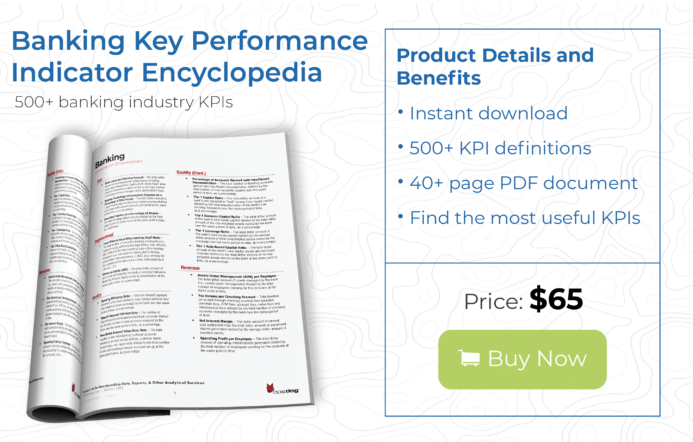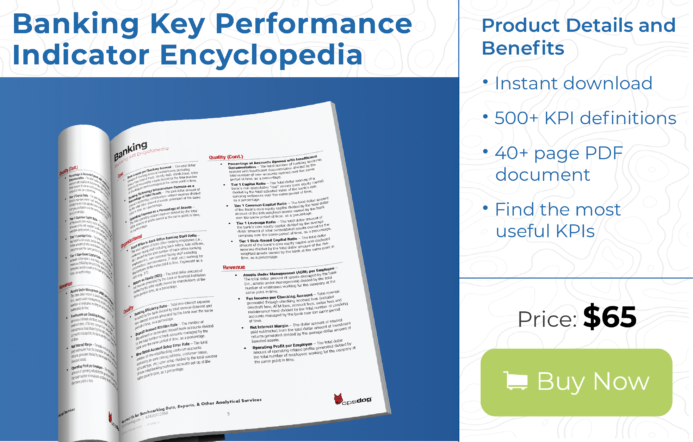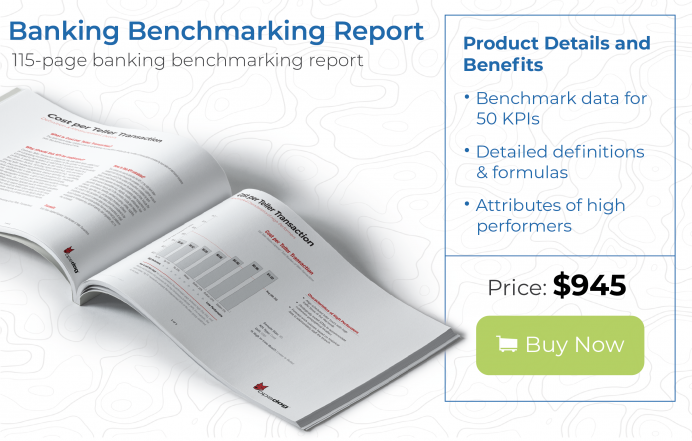If there’s one thing banks have a lot of currently, it’s data. Not just the kinds of data you might be familiar with, but data across a wide variety of sources and systems, from ATMs to traditional credit processing parts of the business. You might think that all this data means every bank is ready to implement business intelligence in banking, but there’s more to this than meets the eye.
The fact of the matter is, yes banks have a lot of data available, but though they might have quantity, quality is a different matter. The truth is that the benefits of business intelligence in banking can’t be felt until the data that is fed into a business intelligence system is good. Right now, banking industry data is tantamount to a landfill – it’s very low quality and messy, not formatted for the kind of work you’d want a business intelligence system to do. This is a problem for anyone who recognizes the importance of business intelligence in banking.
In fact, as things stand now, 80% of project time when it comes to business intelligence implementation in banking is taken up by cleaning that and formatting that data in the first place. Many times, we’ve found that data is not meta-tagged in any useful way, and in fact must be “hand cleaned” to be useable for business intelligence in banking. This isn’t helped by the fact that most banks lack the kind of trained staff needed who can do that kind of work. That’s not a knock on those banks or their existing staff, it’s just a reality of the state of business intelligence in the banking industry.
That’s why one of our focus points at OpsDog is the massaging and cleaning up of this preliminary data in business intelligence in banking. Our team of data pros is always just a call away and ready to help guide business intelligence in banking projects from the ground up.
That’s why, with more competition such as Amazon dipping their toes into the banking pool, it’s more important than ever for banks to really get business intelligence, how it works, and the importance of business intelligence in banking.
What is Business Intelligence in Banking and How Does It Work?
Here’s a crash course for the uninitiated. Broadly speaking, business intelligence describes all the different strategies and technologies businesses use to analyze data for business information. There’s a lot that falls under that umbrella, as you can guess. If it helps you visualize it, here’s a list of just some of the things that business intelligence in banking, or other industries, has a hand in:
- Reporting
- Data mining
- Business performance management
- Benchmarking
- Predictive analytics
What you’re talking about when talking about banking business intelligence, then, is a spectrum of tools at your disposal to handle large amounts of data to identify, develop and create new business strategies. You might think just having the data is enough, but that’s rarely the case. Often, we see clients with large amounts of messy, unstandardized data that just isn’t working for them. Even the best banking business intelligence software can’t work magic with messy data.
Business intelligence in banking is a process. And while you can’t always boil down complex systems into digestible bites, you can certainly hit some key points. For business intelligence in the banking industry, for example, we’ve come up with a few key steps in making sure you see more of the benefits of business intelligence in banking.
- Do a metadata analysis of your existing banking data and make sure it’s tagged in a useful way (data categorization).
- Incorporate automation into your data capture as much as possible – this removes spreadsheets and pushes newfound metatags into the underlying data systems.
- Think about what it means for business intelligence in banking if a data stream goes down and have plans in place for the possibility.
- Clearly document data maps – including where the data comes from and what KPIs it feeds in to business intelligence in banking.
These steps are a natural fit for our team at OpsDog. We’ve helped many banks and other companies by auditing their existing data warehouse structures and recommending ways to improve them to receive the full benefits of business intelligence in banking. Reach out, our team is deft, professional, ready to help and just a phone call or contact form away.
If it feels like data is the word of the day, it is. Without it, you just can’t expect to see good benefits of business intelligence in banking. That’s why the best way for business intelligence in banking to work is for the data upon which the entire process hinges to be as clean and standardized as possible. Without any of the mess clogging up the line, business intelligence in the banking industry can do what it does best:
- Analyze that data
- Develop queries to check against said data
- Create reports with analytical results, including dashboards and other forms of data visualization
Applying Banking Business Intelligence to Improve Operations
“All this is well and good,” you might be asking yourself, “but what’s the point? What can business intelligence in banking do for my bank?” There are many answers to that question, but as the previous subheading suggests, our focus here will be on applying banking business intelligence in operations.
Ultimately, the results you get with banking business intelligence will be instrumental in improving operational efficiency. This is due to multiple factors that a banking business intelligence project can help bring to light. Have you been sitting at your desk and thinking to yourself any of these questions recently?
- Are there any inefficiencies in my bank’s current operations?
- Which of my bank’s services and products are most and least profitable?
- How can I more easily identify, and therefore work to retain, my most profitable customers?
- Can I target my bank’s marketing campaigns better if I segment its customer base? If so, how?
Let’s be honest, as a smart leader in the banking industry, you’ve thought all this and more. Luckily, these are the kinds of operational efficiency questions you can apply banking business intelligence to.
When your data is nice and clean and ready to be put through the banking business intelligence ringer, what will come out is a series of reports and dashboards that will offer a clearer picture of your current operations. From there it’s a matter of taking that knowledge and applying it in the real world. Thankfully, key performance indicators make that easier to do.
Why are KPIs the Most Important Thing to Start with in a Banking Business Intelligence Project?
As anyone who’s followed this blog for some time would know, key performance indicator (KPIs), are quantitative values that measure how well a goal is achieved. It is also an integral part of business intelligence in banking, particularly its beginning. Why? Like a lot of things in business or life, it all comes back to the data.
Remember when we mentioned messy data earlier? Establishing KPIs before diving into the messy data with an outcome in mind and then picking the data that feeds them is a good way to identify what data to wrangle into manageable metrics that your banking business intelligence project can then measure. Using business intelligence in banking, or any industry really, is ultimately a way to improve; but, you can only have true improvement when you can measure against something.
Let’s use an example from our previous section on improving operations. You can have all the data in the world about how many transactions your branches go through in a day, or how many tellers your bank has in total, but that won’t get you very far. However, by combining them into a solid KPI, in this case Transactions Processed per Teller, you now have a solid metric that you can measure against a goal. What banking business intelligence does then, is take that KPI and others, to help you create a solid business plan for future improvements to operations.
Luckily, you don’t have to go in blind at all when it comes to KPIs. OpsDog has extensive encyclopedic files of possible KPIs for your next business intelligence in banking project to start off with. Our KPI offerings extend to a variety of industries, including, of course, banking. You can download a sample or an entire volume at our site, and can always contact us if you want to go deeper into what you need.
Sustaining Cost Reduction with Business Intelligence in Banking
One of the better things about business intelligence in banking is that if you treat your data right, it will continue to work for you beyond the scope of one banking business intelligence project. One project can find cost reduction possibilities in by identifying operational improvements that you can make, but that kind of data, and the key performance indicators you started with, continue to be yours after the specific project has ended.
In short, you can sustain cost reduction because banking business intelligence gives you the tools needed to continue measuring your metrics against your goals. Additionally, with the data you have available to you, you can continue setting down new KPIs for future banking business intelligence projects you might want to move forward with.
An advantage to business intelligence in banking is its real-time analytics component. Your project can be set up to analyze data in real-time, allowing for any changes that mess with your KPI goals to be caught if they begin to interfere with your cost reduction goals.
If you’re ready to start your journey to a banking business intelligence project, contact us today. OpsDog is ready, willing and able to answer all your business intelligence questions and guide you on the path to a successful project.


